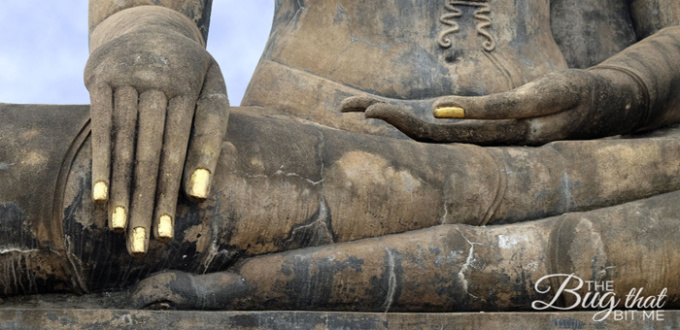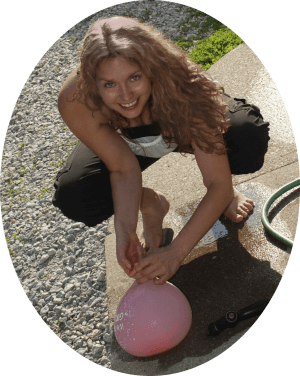As I leave Lopburi, I begin to notice the flat, rather dry landscape become punctuated by the odd big hill. Getting closer to Sukhothai, the flat land has become gently rolling and more big hills dot the horizon. Reaching the city, it almost feels like I’ve entered a different country. It’s a place not easy to get to, and the city feels less accessible. Signs no longer feature characters I can make sense of. The travellers, too, seem to be a different type. No longer tourists, but road-worn travellers. I wonder to myself if anyone will call me out for being only a week on the road, my shoes not completely trashed, my clothes not dusty enough yet. And I still have an excitement in my step, while the foreigners I’m seeing seem resigned in a way. But to what? I’m not finding them sharing a friendly smile as we cross paths. But the Thais are still smiling, and they outnumber everyone else.
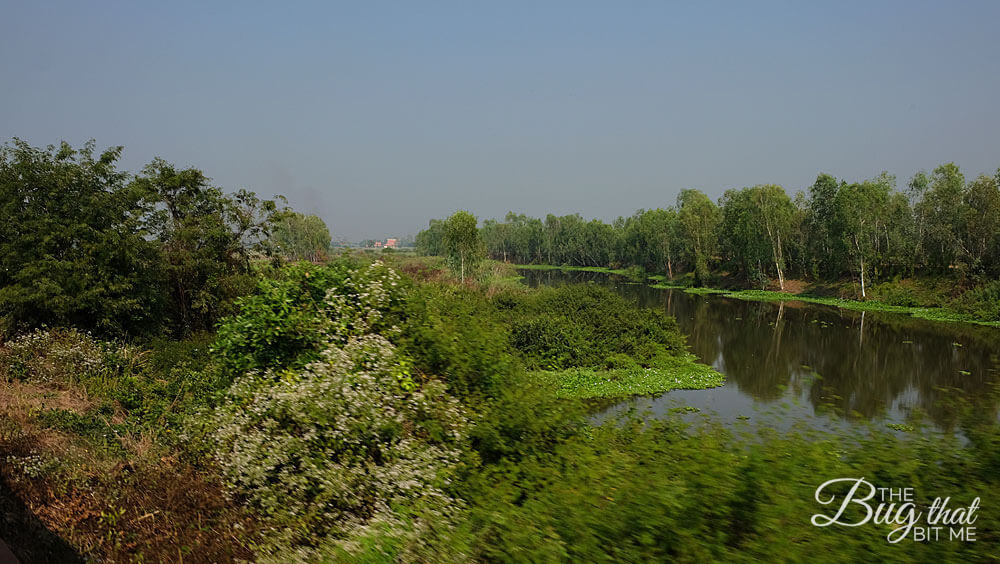
View from the train to Phitsanulok
To reach Sukhothai from Lopburi there aren’t many options. I took a train out of Lopburi headed to Phitsanulok. Once in Phitsanulok, I caught a tuk-tuk for 60 Baht to the bus depot and caught a bus to Sukhothai. As I was the only foreigner arriving that night, I had a songthaew to myself for the journey to my guesthouse in the new town. At 80 Baht, I’m confident I overpaid, but there was only one songthaew. My options were limited.
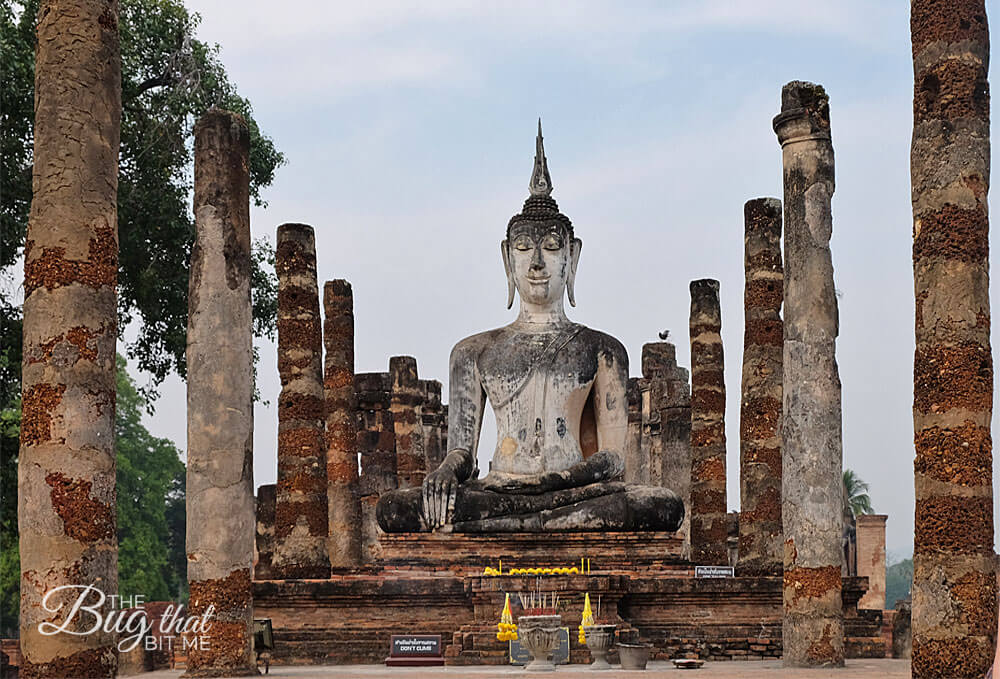
My first view of the ruins is Wat Mahathat. It doesn’t disappoint.
It was as I went to explore the town and find something to eat that the real differences stood out to me. This place doesn’t cater to tourists, I expect it’s because there aren’t as many of them. I had read prior to arriving that the place to be was in the new town, but the following morning, as I ride the songthaew for 12 km into the old town and the ruins, I don’t know if I agree. There are many guesthouses in the old town– actually the village of Tambon Mueang Kao– and plenty of restaurants. It’s not like there are nightclubs and late-night establishments in the new town, so I’m not sure what the draw would be to stay there. Had I known, I would have stayed in the old town and had the option of wandering around the ruins more freely. Live and learn!
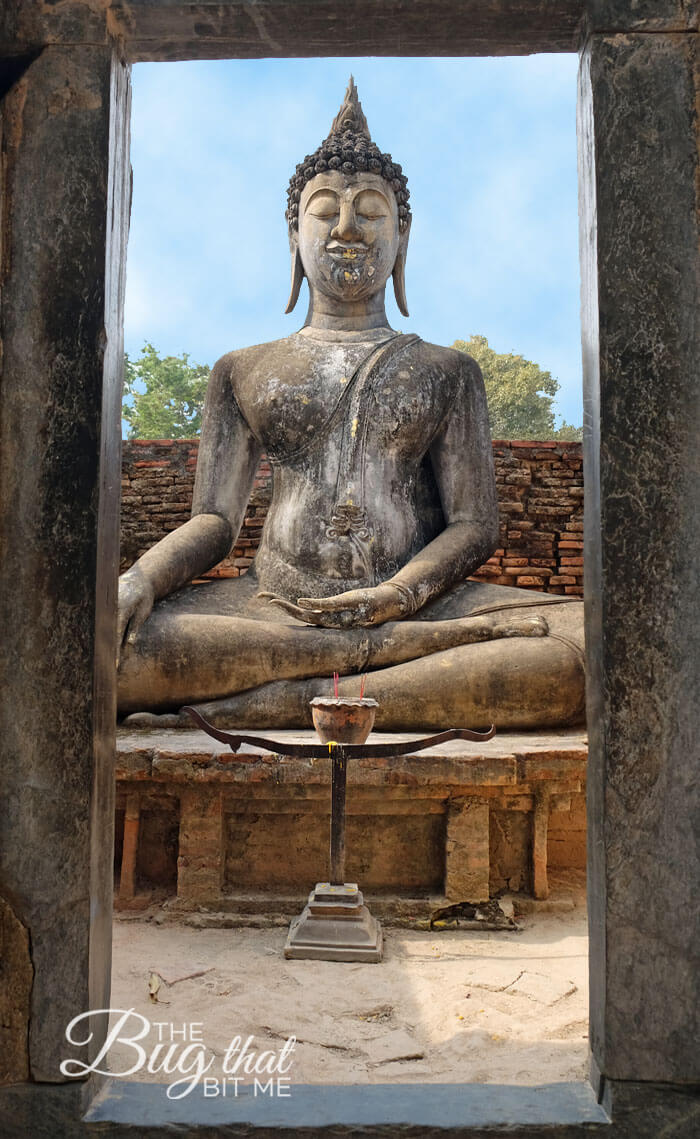
The beautiful Diamond Eyes Buddha
The songthaew to the ruins runs along the main street. I picked it up in front of 7/11, which seems to be a popular place for them to stop. It cost 40 Baht and I was happy to see it fill up with friendlier travellers. It’s an interesting 12 km ride, allowing us to take in the true Thai way of life. People hopped on and off along the way, forcing us to get cozy on the narrow benches. The ride takes a very bumpy 30 minutes. The park is open from 8:30-6:00 daily. I recommend starting out early. The sun won’t be as hot and you’ll have better skies for your photographs.
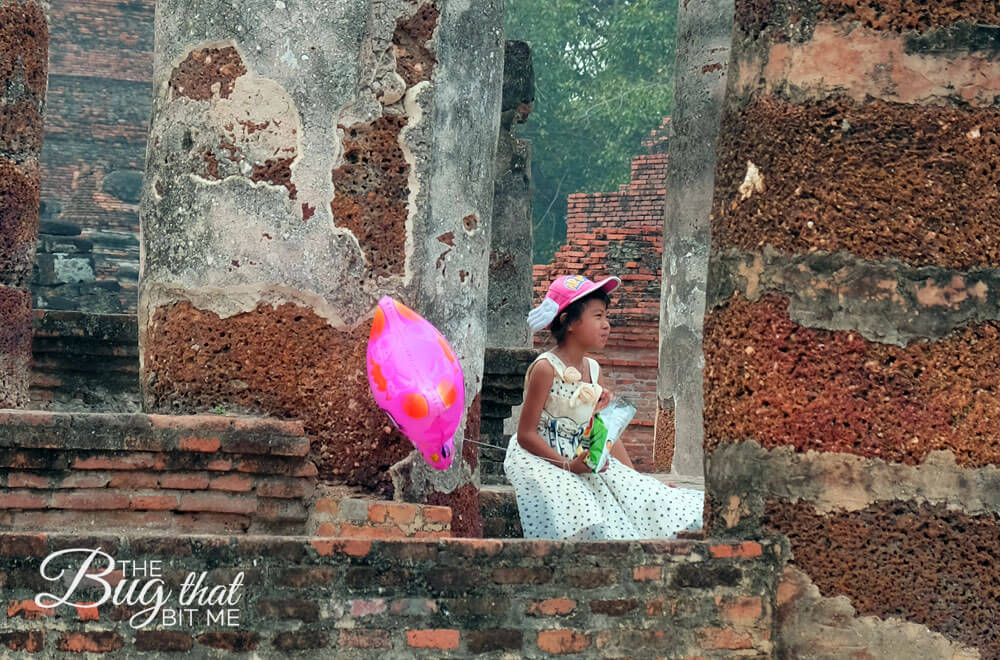
A girl poses with her balloon. It was Children’s Day and there was a big celebration nearby
As we reached the ruins, now a UNESCO World Heritage historical park, it was clear that this was no Lopburi, and it had a grandeur that even Ayutthaya didn’t. The ruins were huge, elaborate and beautiful, and the grounds very well kept. I excitedly hopped off, eager to begin exploring. Before approaching the grounds, a local handed us maps and strongly suggested we rent bikes to tour the area. After all, it is quite spread out and the roads are in good shape for riding. I declined, though, preferring to walk. I must have put in quite a lot of miles that day, but I really enjoyed strolling through the park. Several people opted for bikes at a very affordable rate.
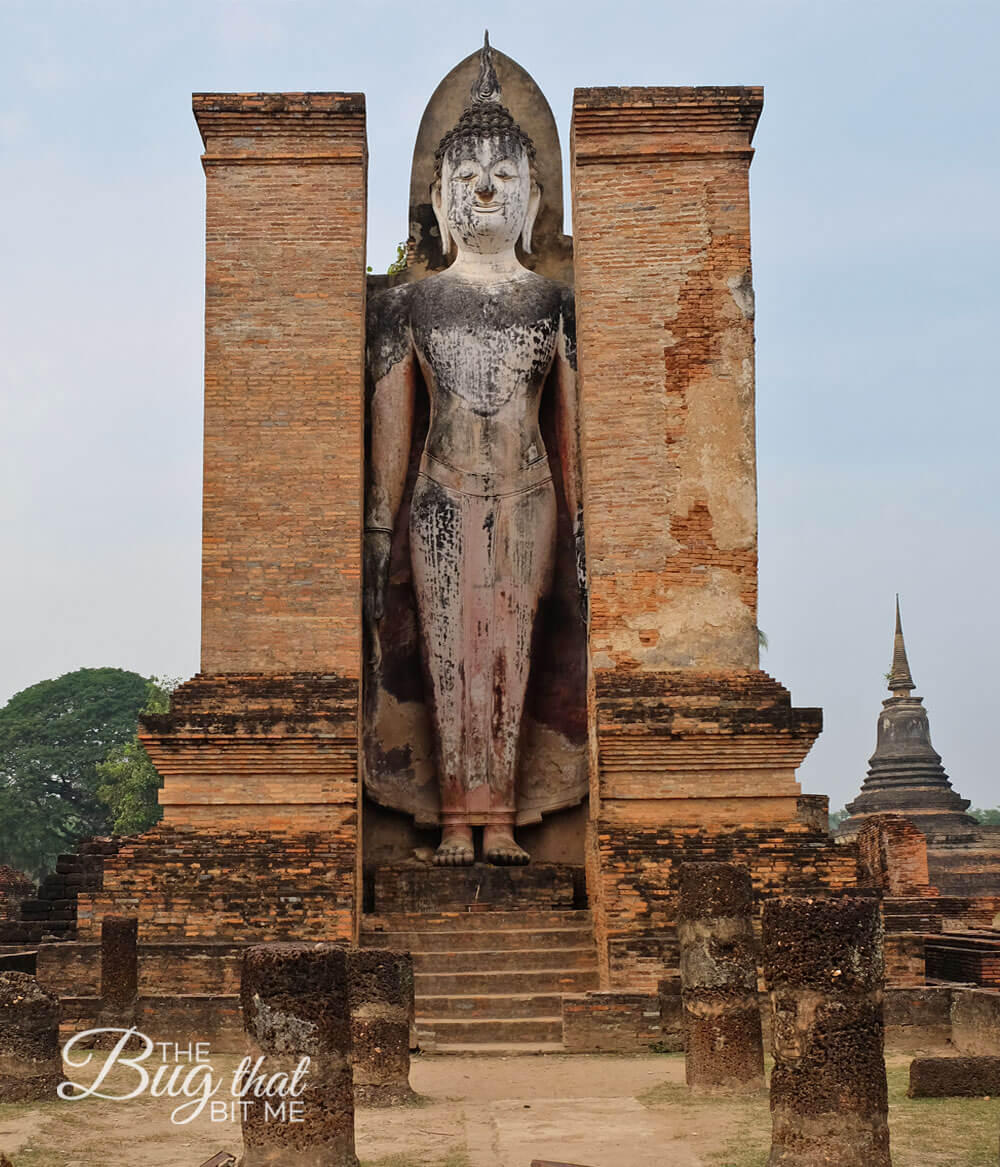
Sukhothai Historical Park, Wat Mahathat
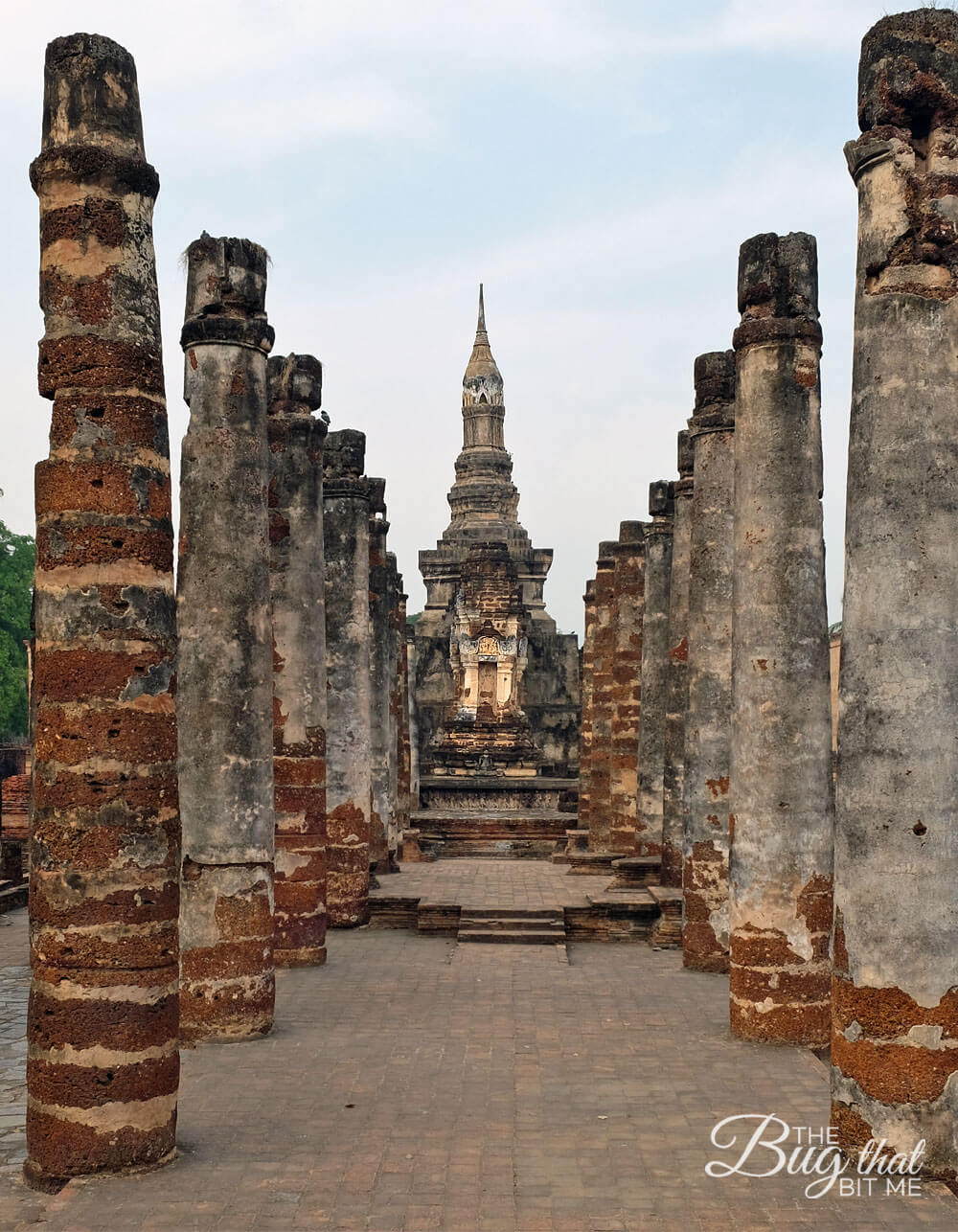
Sukhothai Historical Park, Wat Mahathat
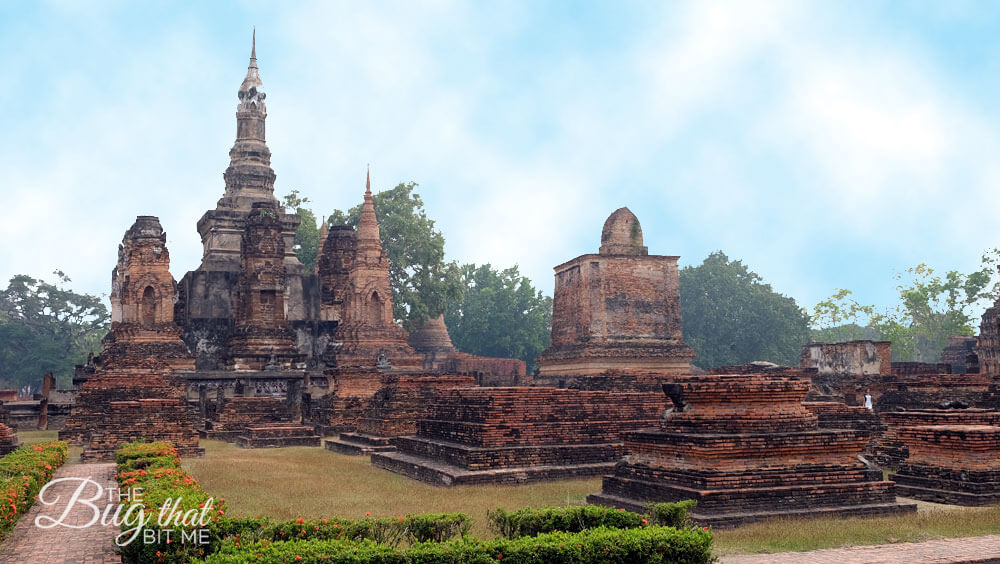
Sukhothai Historical Park, Wat Mahathat
Upon approaching the gate, again the gatekeeper announced that the site was free! I’ve gotten lucky with free historical site visits in Thailand. He said, Happy New Year” with a smile! No complaints here. Typically, the area costs 100 Baht/site, of which there are five—the inner city, and the north, south, east and west. There is also a combo pack for 350 Baht, but it is only good for one day, so if you plan to spread your trip out over two days (almost necessary to see everything), it’s not really worth your while to get the combo pack.
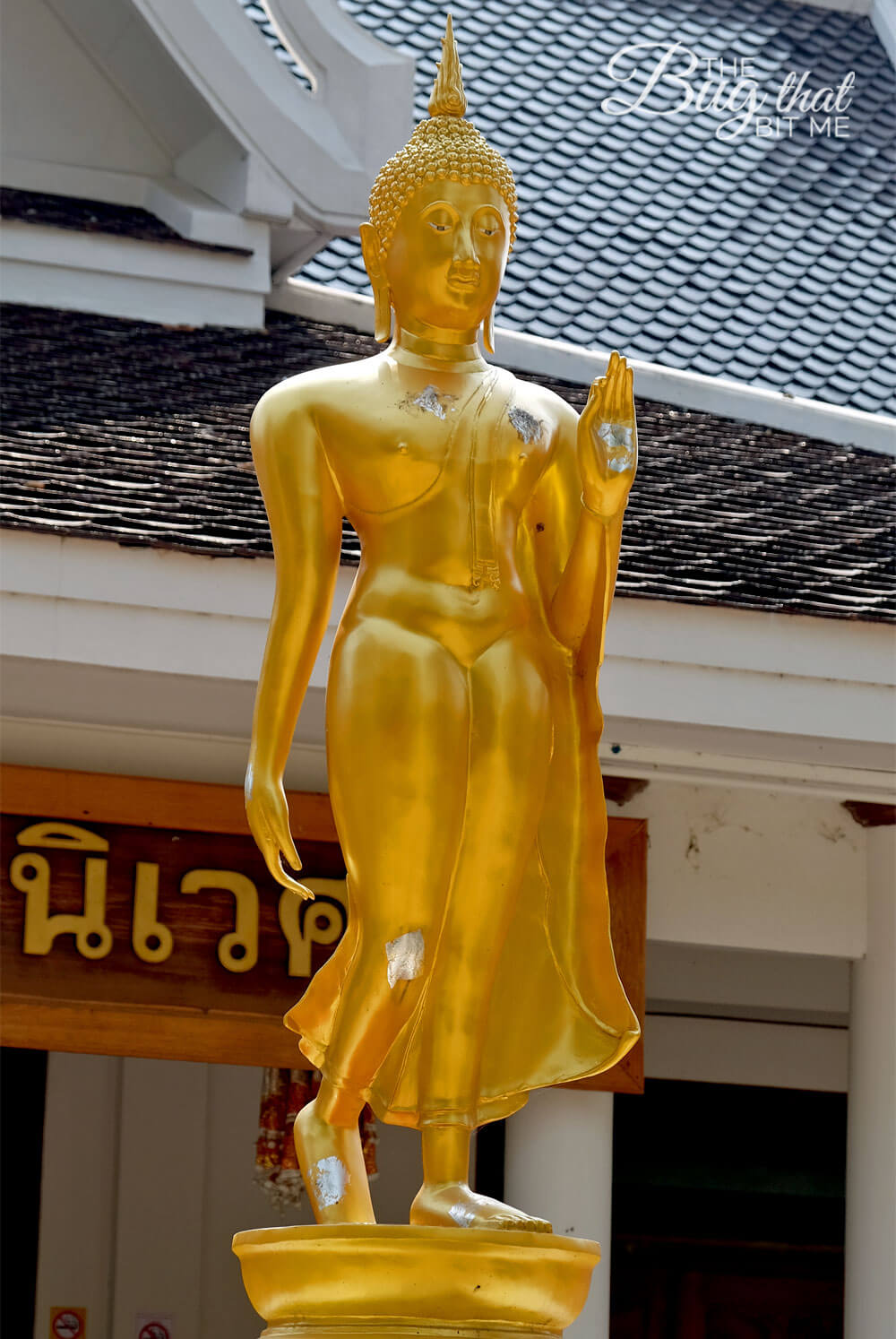
Sukhothai Historical Park, outside a new temple at Wat Phra Phai Luang
The Kingdom of Sukhothai began in 1238. At that time, Lavo was the official heart of the kingdom. Under Ramkamhaeng the Great, the kingdom expanded and traditional historians considered the founding of the Sukhothai Kingdom the true beginning of the nation of Siam. The Thai alphabet was created and trade began with China. Modern historians have been able to prove that Thai history began well before the establishment of Sukhothai, but it remains a celebrated historical event nonetheless.
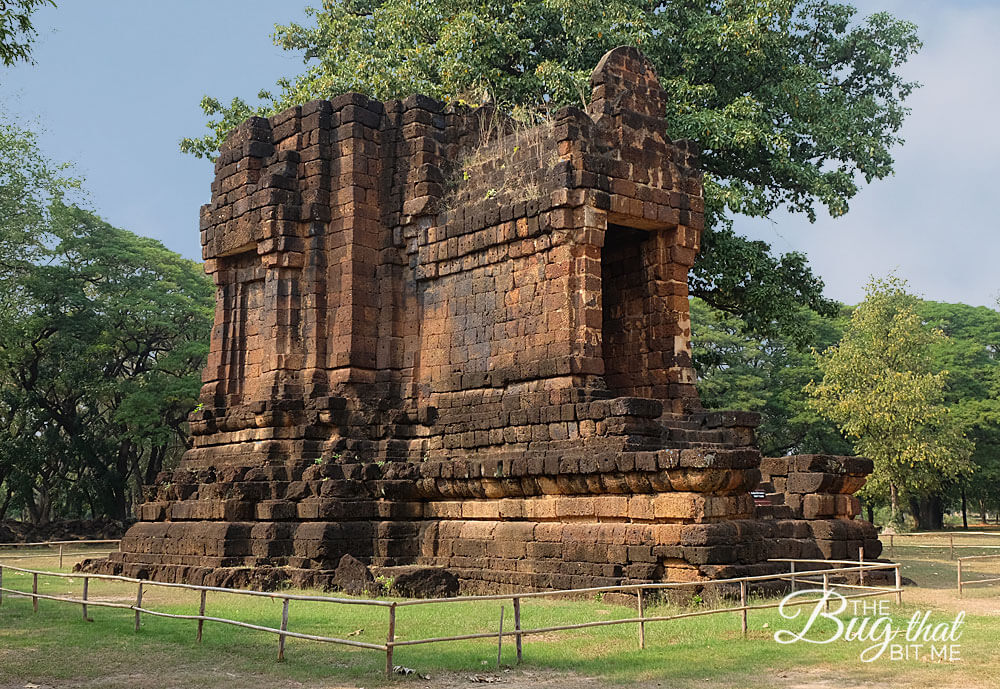
Sukhothai Historical Park, Wat Son Khao
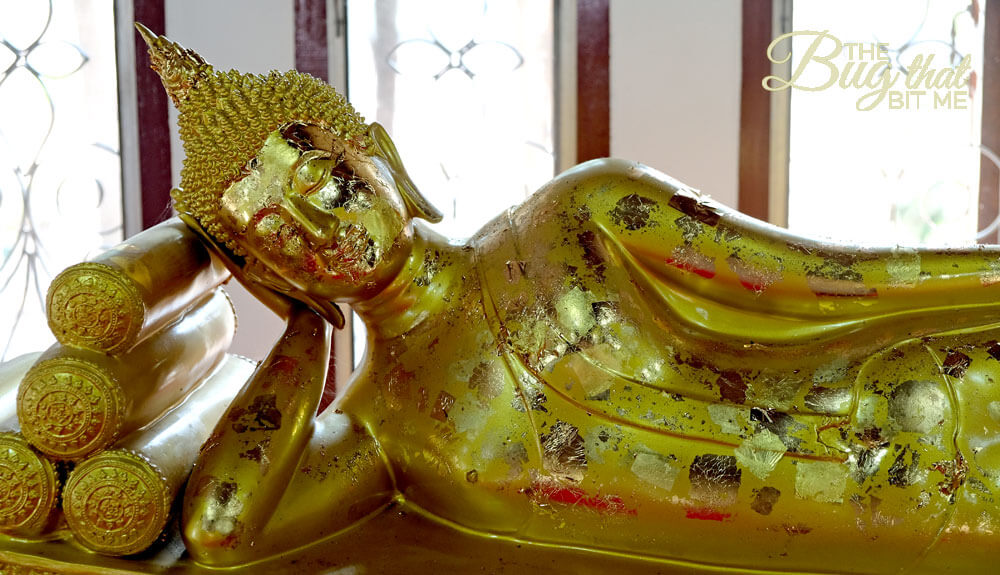
Sukhothai Historical Park, Wat Phra Phai Luang
The Kingdom of Sukhothai thrived for almost 100 years. Upon Ramkamhaeng’s death, however, the kingdom started to break apart. Ramkamhaeng’s son Loethai was unable to keep the vassal kingdoms together, and one-by-one, they broke away. Armies from the Ayutthaya Kingdom invaded Sukhothai in 1349, putting Sukhothai under her control.
Eventually, Sukhothai repopulated, but suffered from successive Burmese invasions. The town was abandoned completely in 1793 when Rama I established the new capital at Bangkok and Sukhothai 12 km east of old Sukhothai. The temples were raided and the Buddhas and other works of art brought to Bangkok.
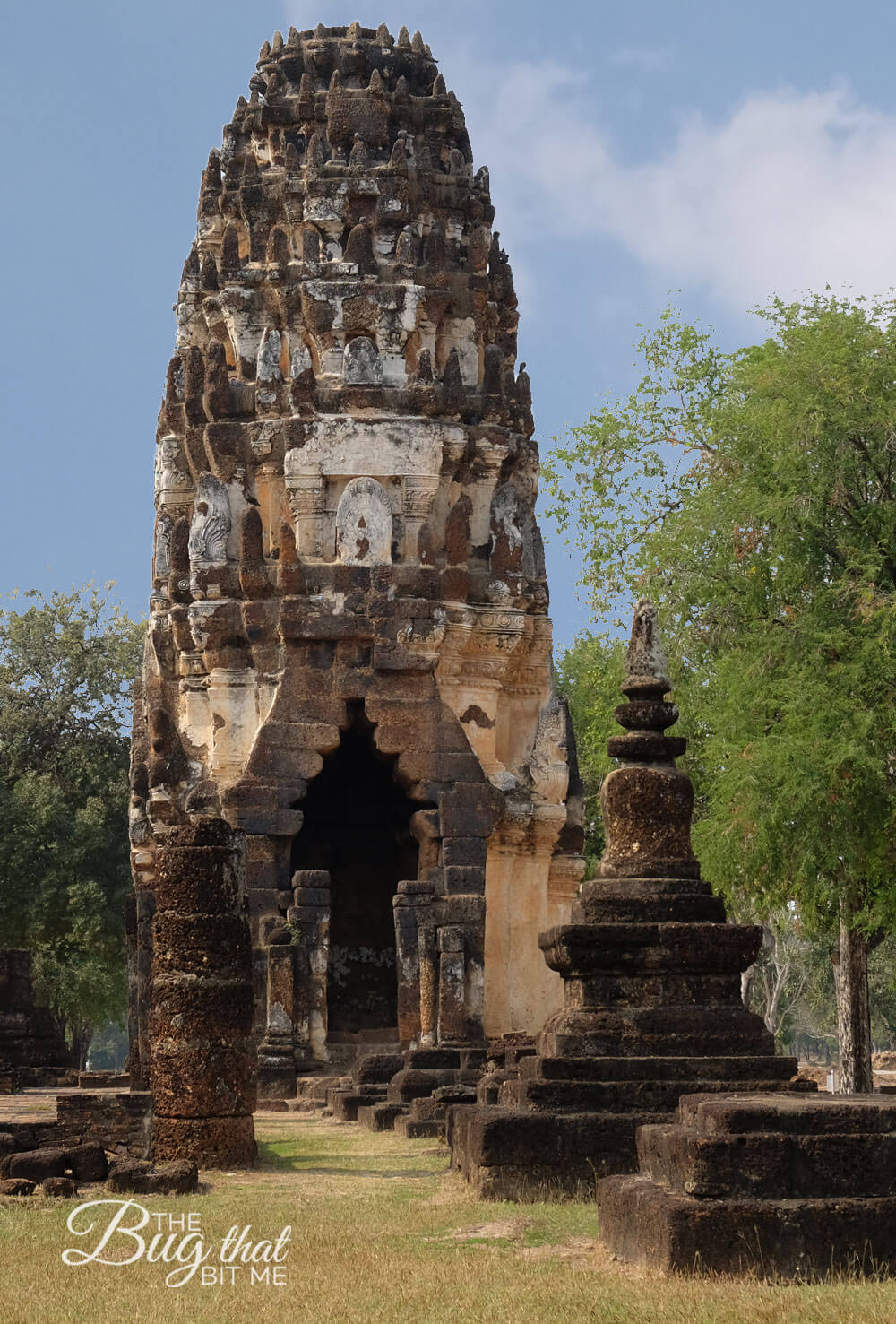
Sukhothai Historical Park, Wat Phra Phai Luang
Wat Mahathat
I entered the park and started straight towards Wat Mahathat in the centre. Wow! Wat Mahathat is one of the 26 temples within the Historical Park, and it is the largest and most important. It is near the centre of the walled city and lay beside the Royal Palace, of which nothing remains. No exact dates exist for its construction, but experts agree it was likely built over many years between the mid-13th and 14th centuries. The complex once held five ponds, 10 prayer halls and 200 chedis. It was built to enshrine relics of the Buddha.
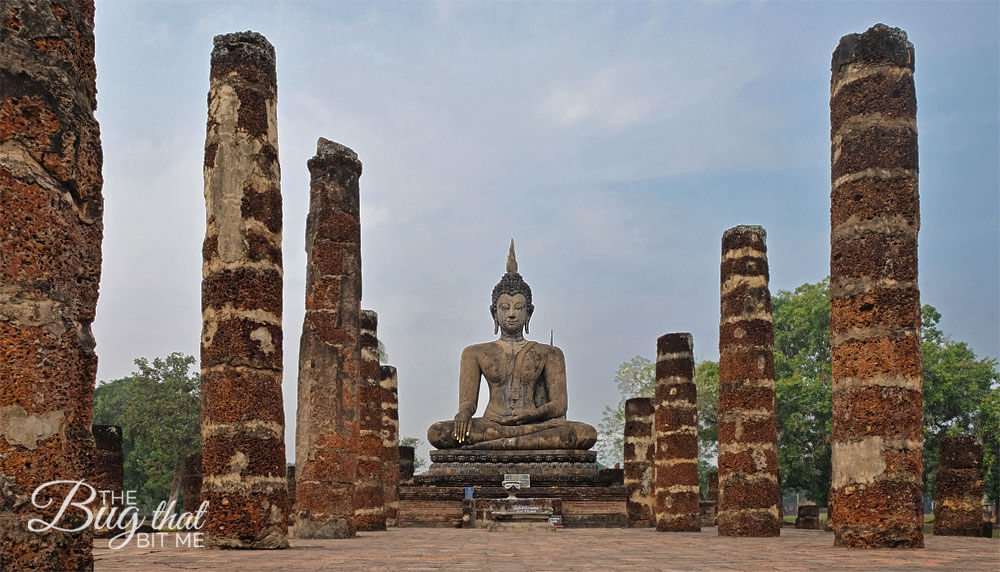
Sukhothai Historical Park, Wat Mahathat
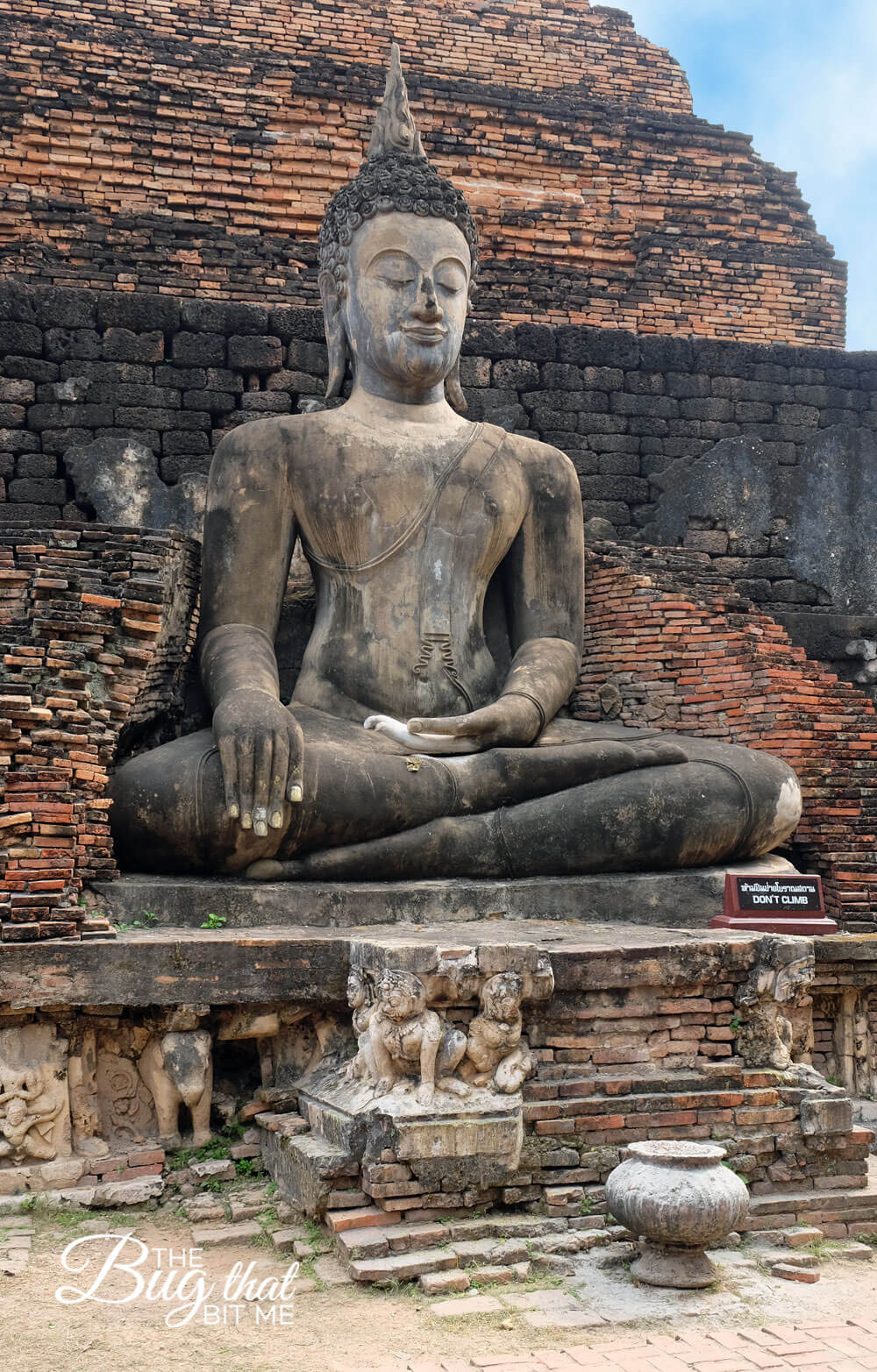
Sukhothai Historical Park, Wat Mahathat
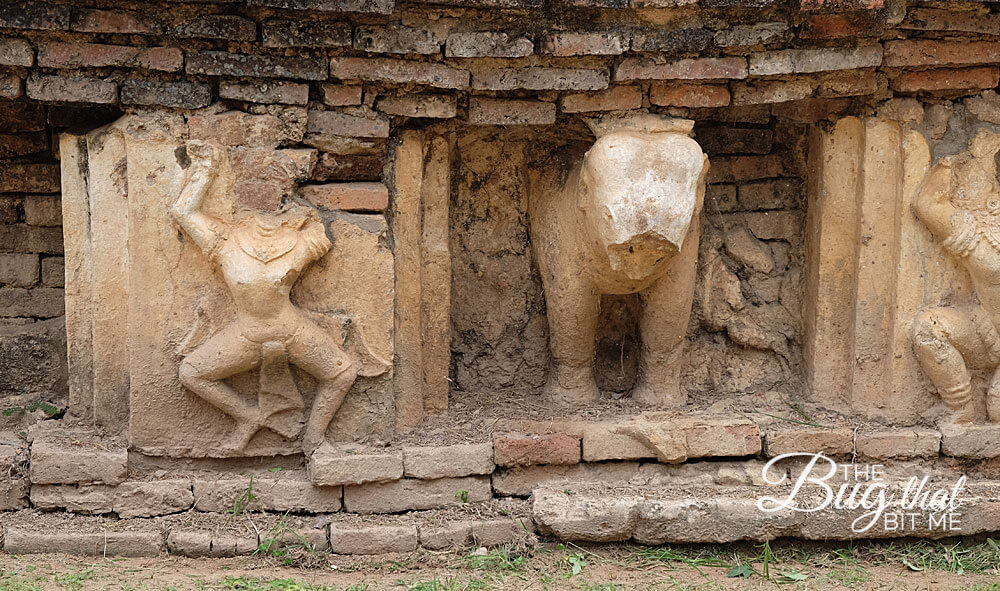
Sukhothai Historical Park, Wat Mahathat
Wat Phra Phai Luang
Wat Phra Phai Luang is a large temple, second only to Wat Mahathat. It was the ritual centre of Sukhothai. It lies outside the city walls and is considered to be older than the city of Sukhothai itself, built in the late 12th century.
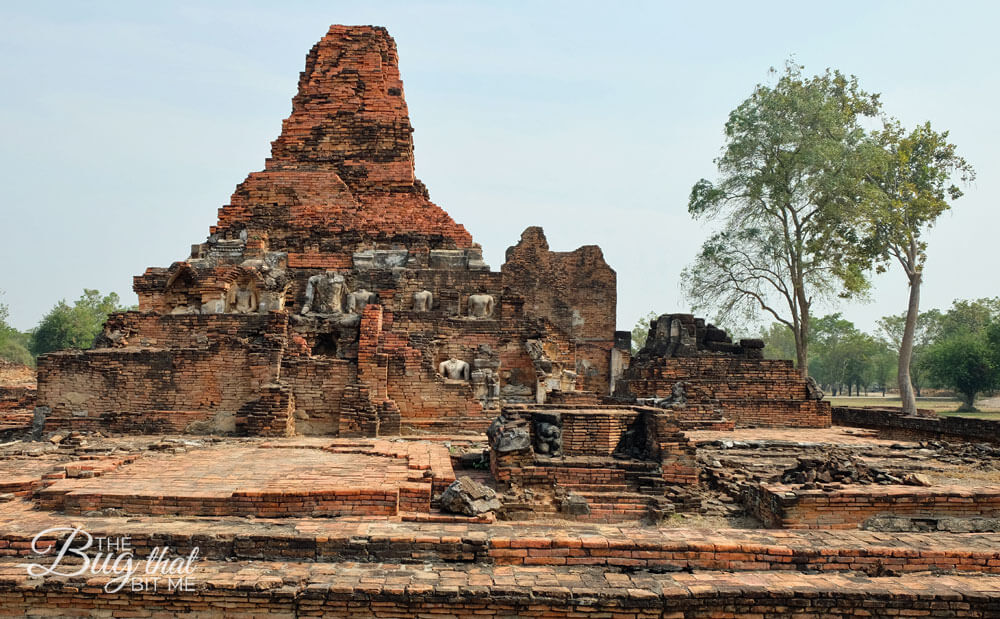
Sukhothai Historical Park, Wat Phra Phai Luang
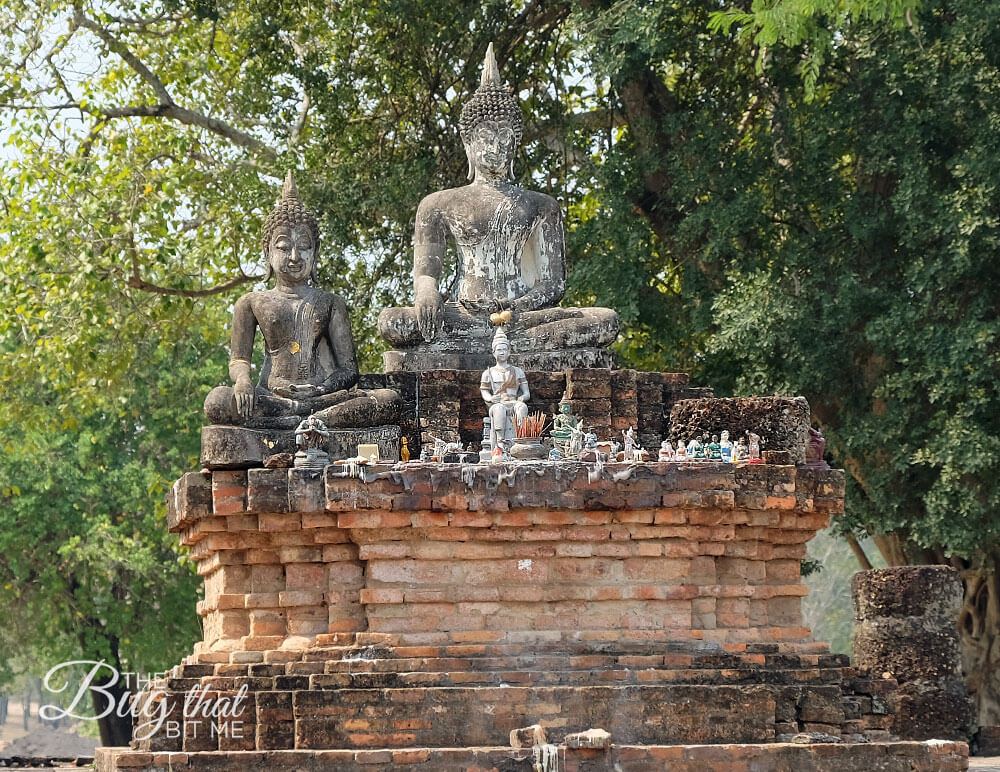
Sukhothai Historical Park, Wat Phra Phai Luang
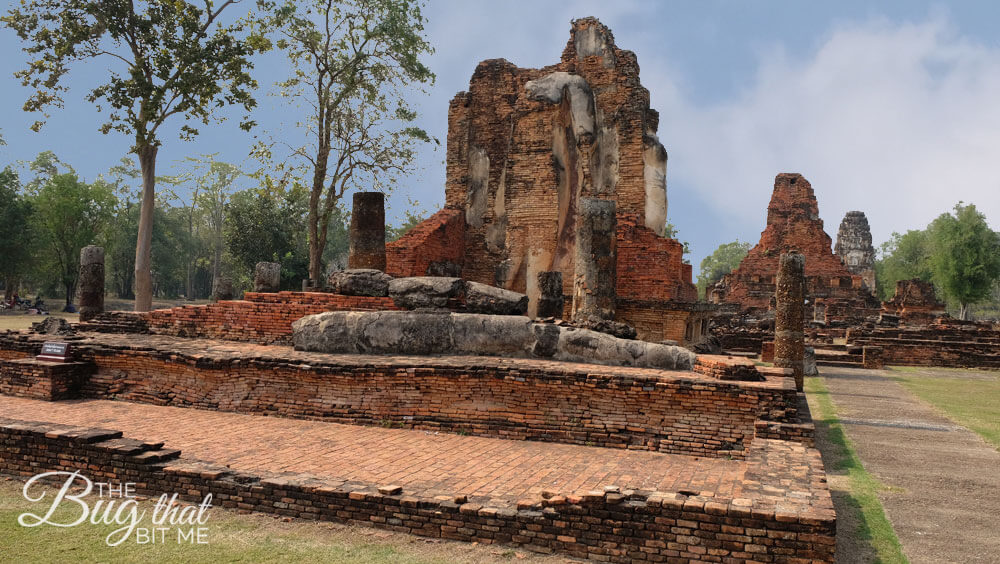
Sukhothai Historical Park, Wat Phra Phai Luang
Wat Si Chum
Wat Si Chum holds a beautiful Buddha statue. It is located outside the city walls to the north. If you’re walking, it’s a bit of a hike, but well worth it. It was built in the late 13th century. The entire area appeared to be getting a bit of a facelift during my visit. There were very few people around, which made it nice to visit.
The large, serene Buddha statue at Wat Si Chum is only visible through a slit in the wall of the mondop. The roof has long since disappeared and the building is open to the sky. The tips of Buddha’s long, elegant fingers have been adorned with gold leaf by devoted Buddhists. It is beautiful. Legend has it that the invading Burmese army fled at the sight of this Buddha. Perhaps that’s why he is still standing.
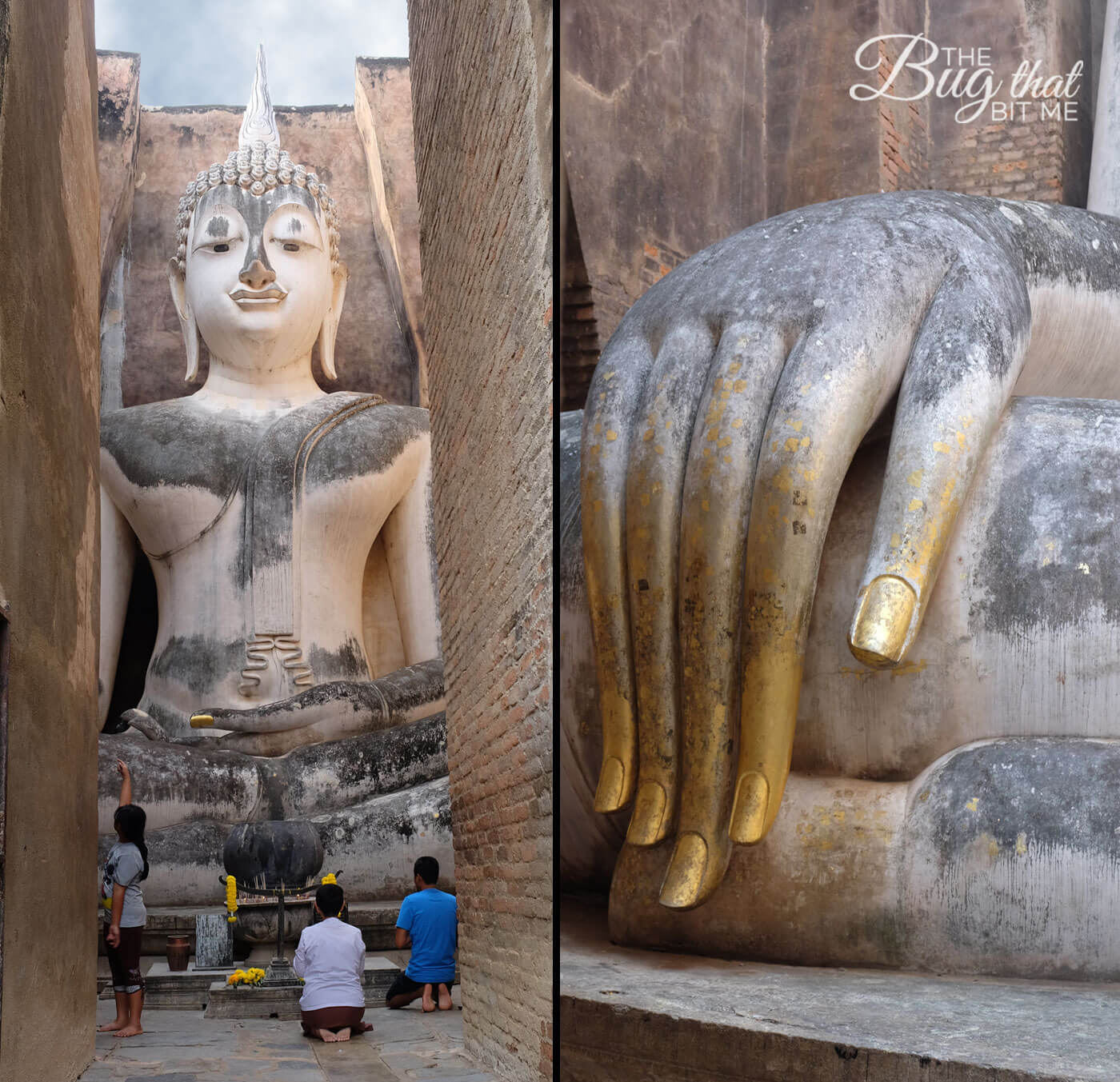
Sukhothai Historical Park, Wat Si Chum
The walls of the mondop are three feet thick, housing a narrow corridor in which were found 50 slate engravings of the life of Buddha, the oldest works of Thai art known to exist. Legend has it that the kings, in order to boost the morale of the soldiers and residents, would hide in the corridor and speak to the people through a hole, making them believe it was Buddha speaking.
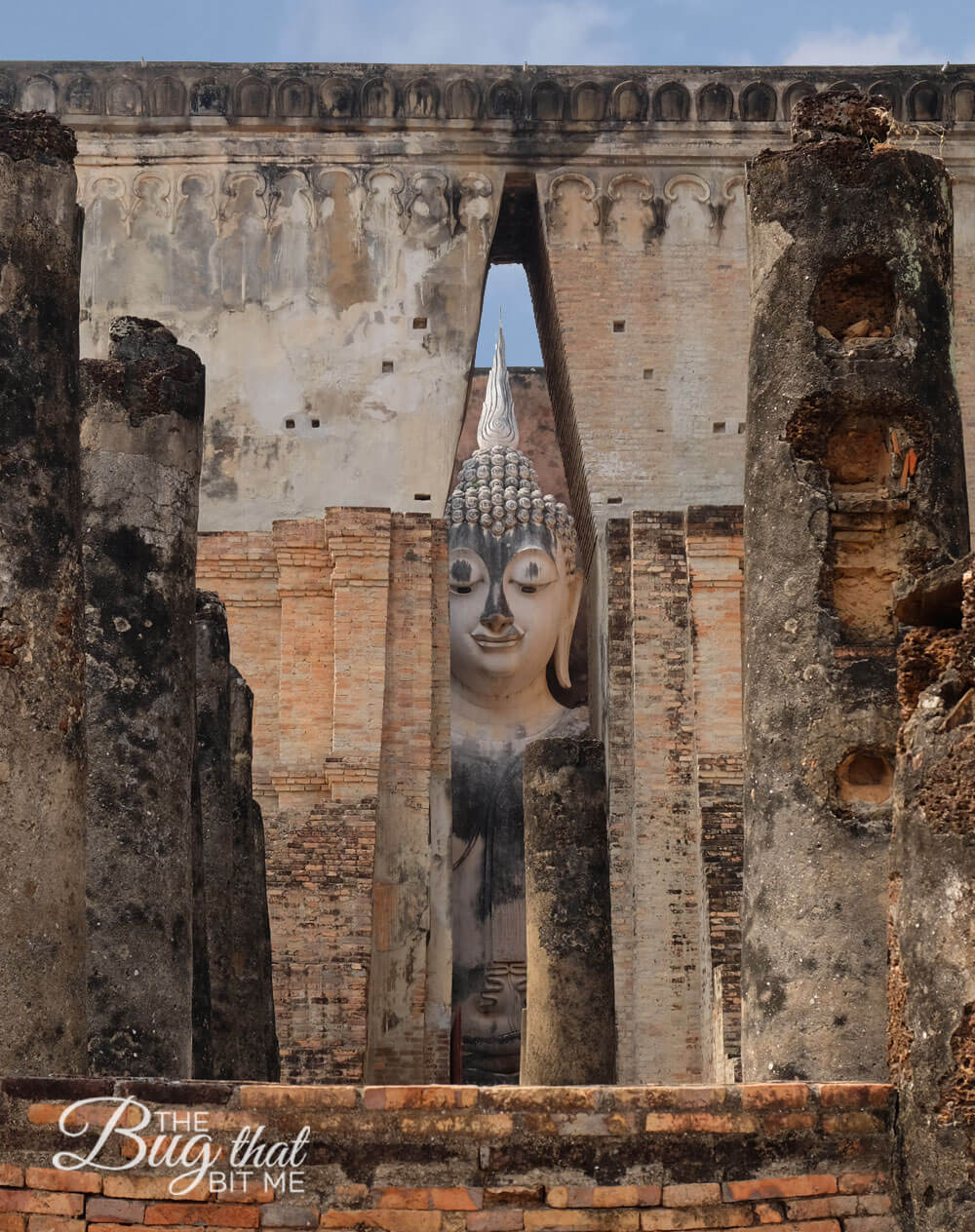
Sukhothai Historical Park, Wat Si Chum
Wat Si Sawai
Wat Si Sawai was built in the late 12th or early 13th centuries, making it one of the oldest in Sukhothai. It is styled after the Khmer style and was built for worship of Hindu gods. Three massive prangs dominate the central sanctuary. The decorations on the prangs can still be made out. The temple was converted to a Buddhist monastery in the 14th century, and a prayer hall was added.
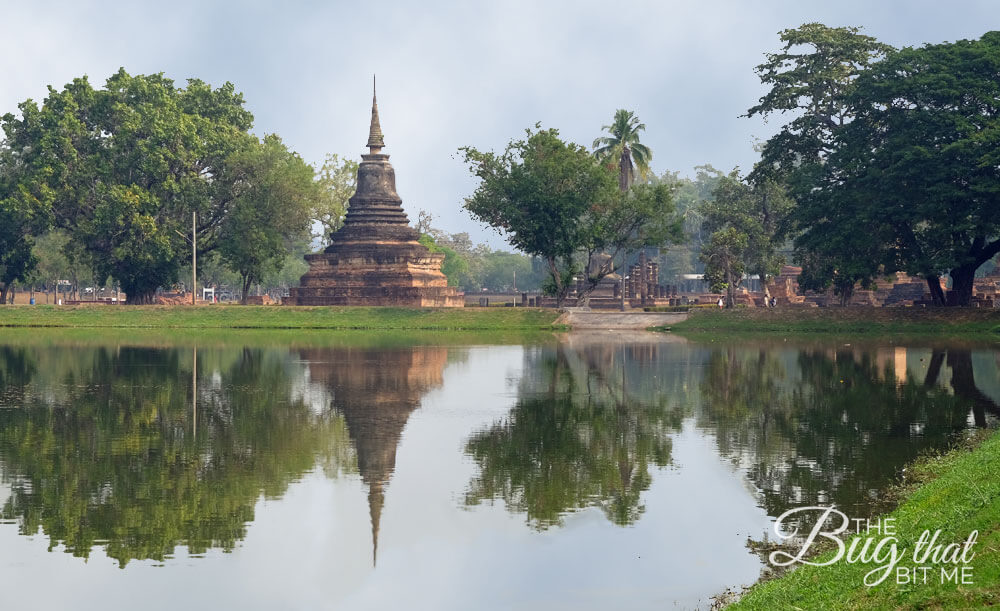
Sukhothai Historical Park
Wat Sorasak
Wat Sorasak also lies outside the inner city. It dates to 1412. Beautiful large elephant statues come out of the base of the chedi, and they are in good shape.
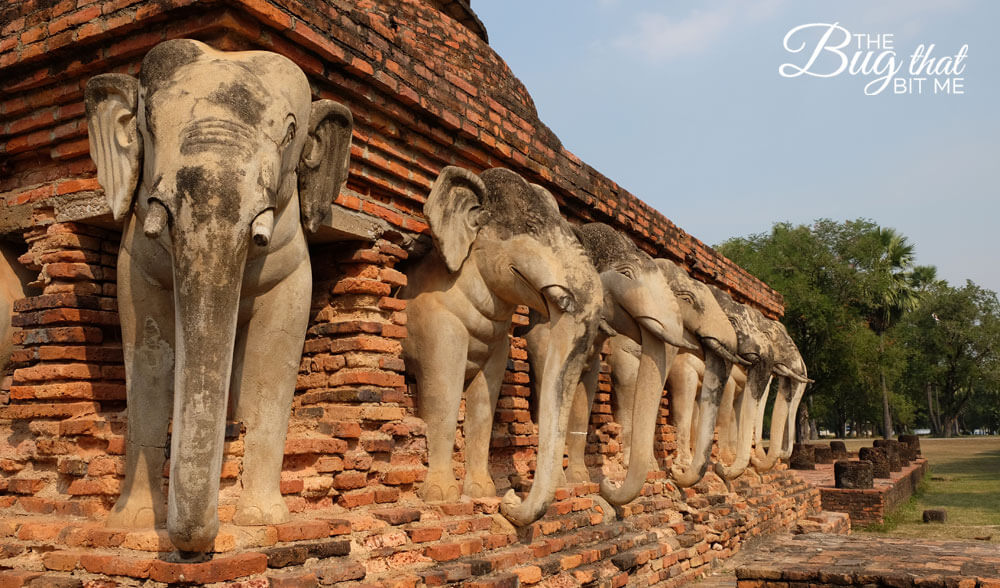
Sukhothai Historical Park, Wat Sorasak
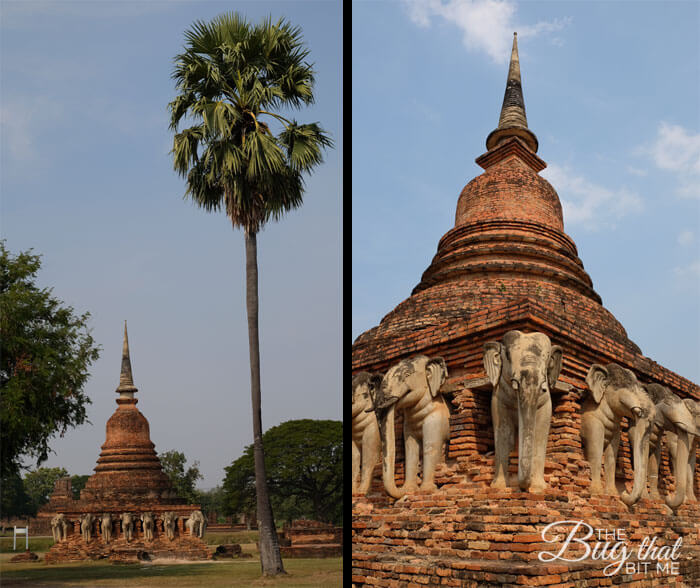
Sukhothai Historical Park, Wat Sorasak
Wat Traphang Ngoen
Wat Traphang Ngoen, Temple of the Silver Pond, lies in the large pond that separates it from Wat Marathat. It was built in the 14th century. It is composed of a main chedi in the shape of a lotus bud, an assembly hall, and an ordination hall. It is oriented so that the temple is illuminated by both the rising and setting sun.
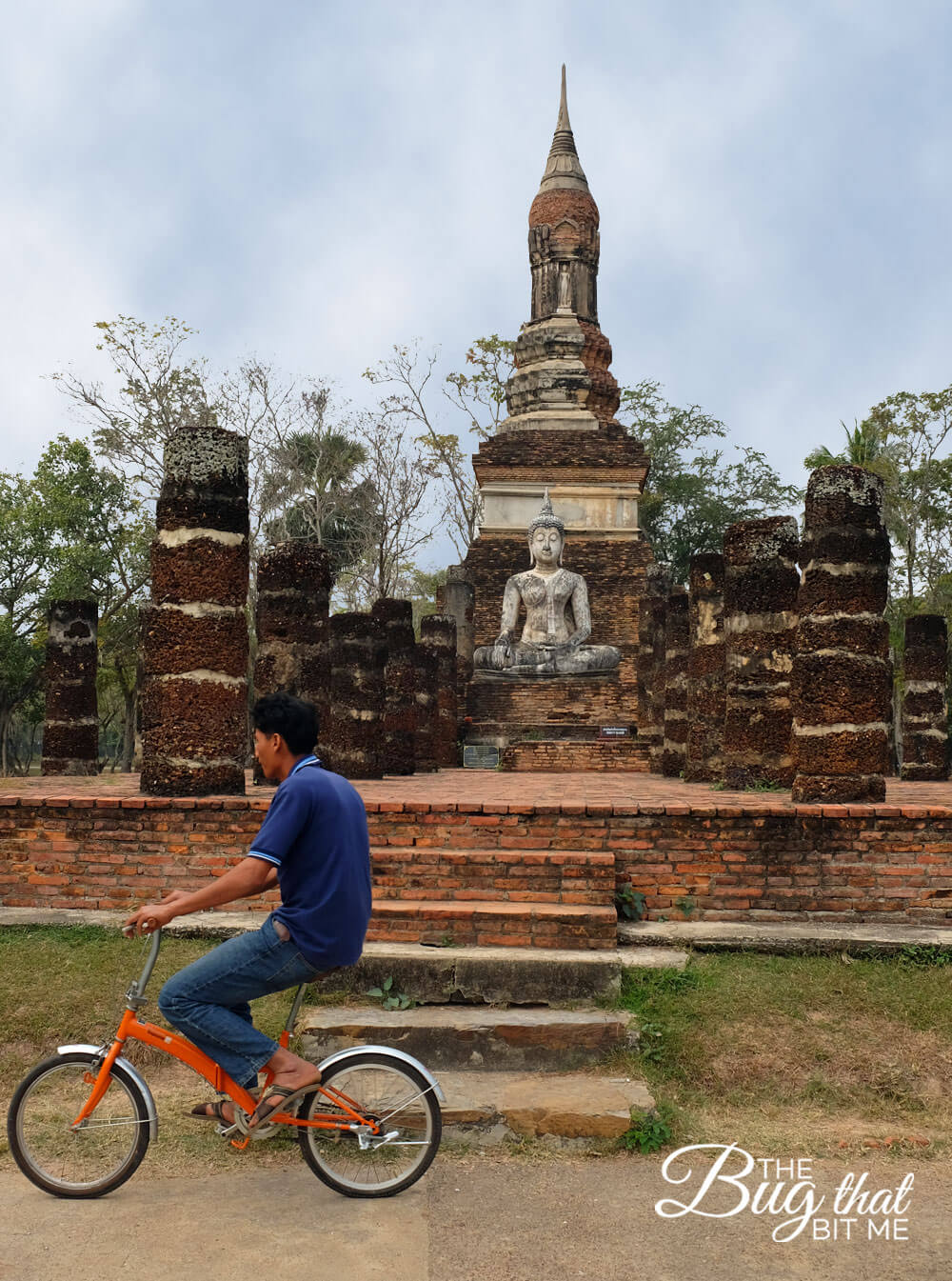
Sukhothai Historical Park, Wat Traphang Ngoen
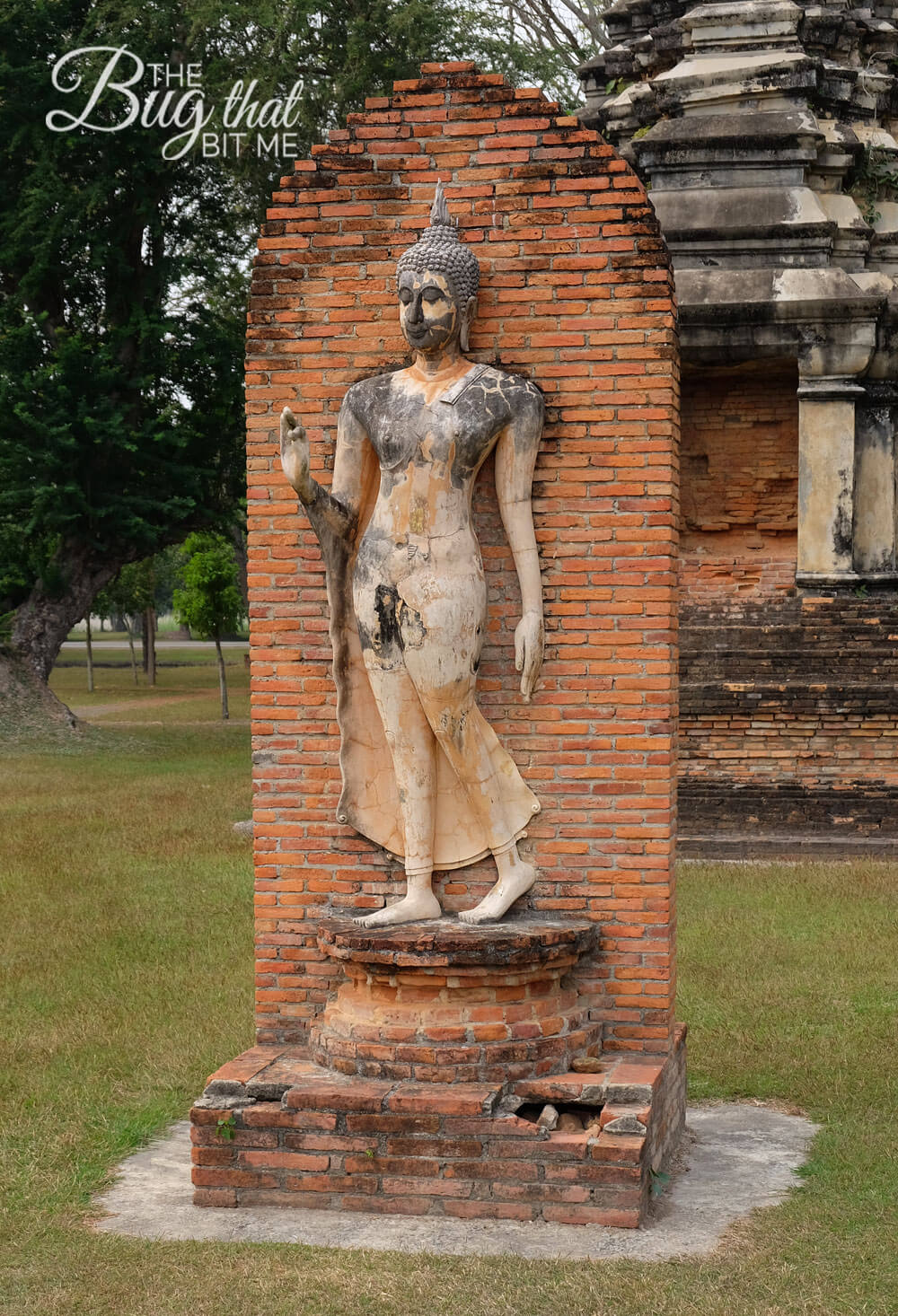
Beautiful standing Buddha at Sukhothai Historical Park, Wat Traphang Ngoen
King Ramkhamhaeng Monument
In front of the King Ramkhamhaeng Monument, I encountered a group of women selling small birds caged in a tiny bamboo cages, barely small enough for them to turn around in. There were also small bags with 11 different lake creatures in them including eels, turtles, and fish. I admit to being pretty disgusted by the practice. The point is to buy the animals and set them free, gaining Buddha’s good graces. I think Buddha might have something to say about that. My emotions got the better of me and I bought two birds and immediately let them go. I realized after I did that, that I was only supporting this practice. I was just sickened by the sight of these beautiful little birds singing so loudly in their miniscule prisons. A girl I met bought some of the lake critters and let them go. I have hopes that the birds might not be captured again, but don’t feel so hopeful for the aquatic animals in the small lake. As horrible as this is, it’s probably better to bypass these women altogether.
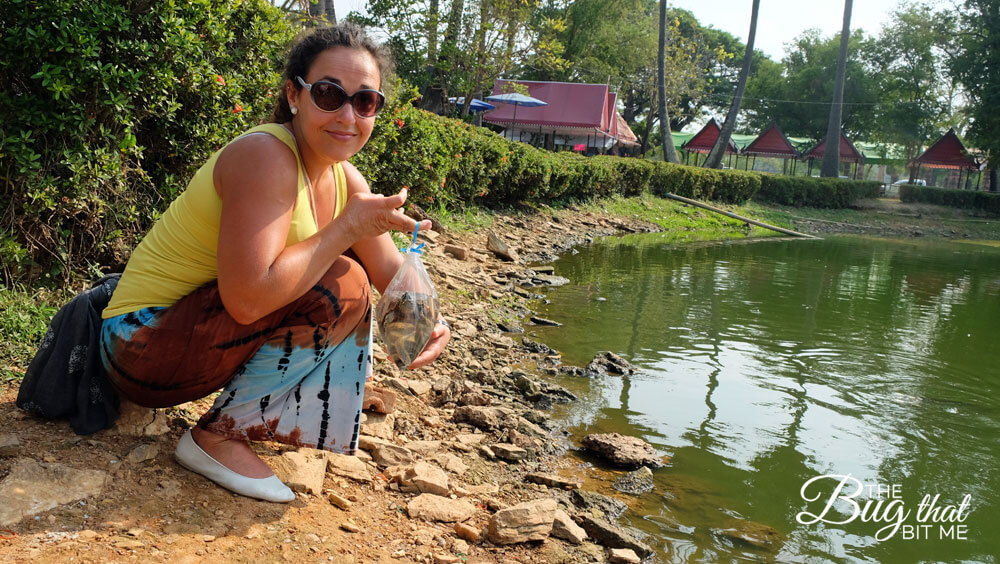
Releasing some aquatic animal at Sukhothai Historical Park
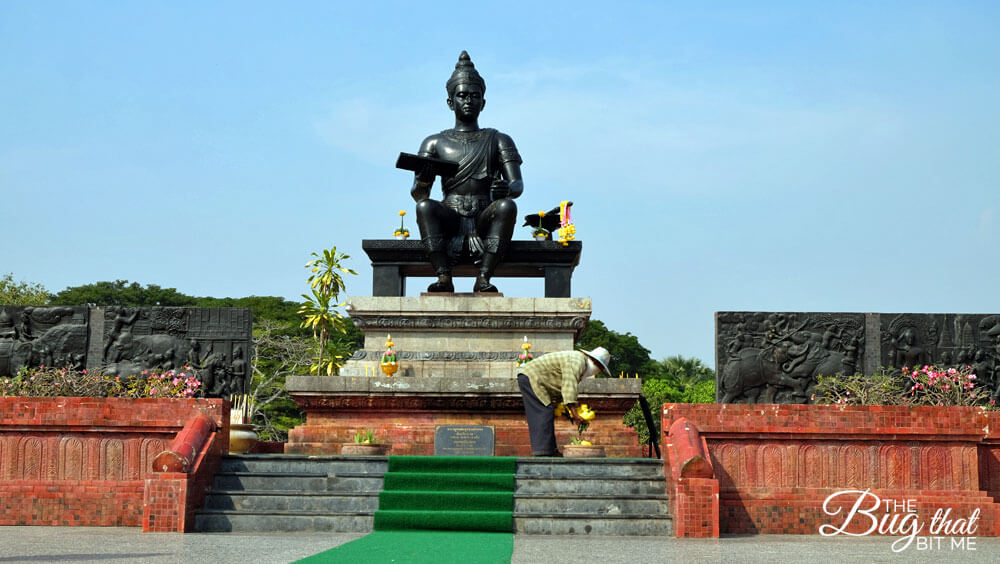
Sukhothai Historical Park, King Ramkhamhaeng Monument
This is only a small sampling of the many ruins you will find in Sukhothai. I believe you need at least two days to see it properly. I really enjoyed wandering around the beautifully kept park, with very few tourists to spoil the mood or my photos! It is definitely worth a trip a bit off the beaten path to visit Sukhothai if you’re heading to northern Thailand.
Info
- Located 12 km west of Sukhothai city. Can be reached by a Songthaew for 40 Baht.
- Open daily from to 8:30 to 6:00.
- Cost is 100 Baht per site for each of five sites, or a combination pass for 350 Baht, good for one day.
- Also visit the Ramkhamhaeng National Museum, open daily from 8:30 to 4:00.
- There is a sound and light show at Wat Sa Sri the first Saturday of the month during from October to April. Unfortunately, I didn’t time this with my visit, but I’ve been told it’s quite good.
- Here is a really good interactive map of the area to help you plan your visit!
